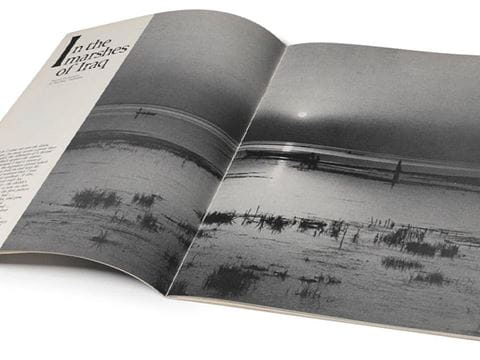
Spotlight on Photography: Beni Isguen, Algeria by George Steinmetz
As a young college student in the 1980s, George Steinmetz hitchhiked in the desert lands of north-central Algeria along the Sahara. In 2009 he revisited the region, now as a world-renowned photojournalist working on a book about the world's extreme deserts and the human adaptations and settlements in them.
As a young college student in the 1980s, George Steinmetz hitchhiked in the desert lands of north-central Algeria along the Sahara. In 2009 he revisited the region, now as a world-renowned photojournalist working on a book about the world’s extreme deserts and the human adaptations and settlements in them.
He recalled the hilltop city of Ghardaa and its unique architecture. This city is actually comprised of five villages, among them Beni Isguen, which in 1982 was inscribed as part of a UNESCO World Heritage Site and regarded as the best-preserved example of the region’s traditional building styles and urban organization.
The day before this image was taken, Steinmetz flew up to get a view of the town using the foot-launched, motorized paraglider—at less than 45 kilograms, the lightest motorized aircraft in the world—that allowed him to make uniquely close, low-altitude aerial photographs in remote regions. The next morning at sunrise, he made multiple flyovers above Beni Isguen, bracing the camera between his legs in order to look straight down to the pattern and colors of the village’s walled, rooftop patios and narrow streets. “There are still parts of the world that live on, in a traditional way,” Steinmetz reflects. “It’s important to know there are other worlds out there.”
—Sarah Taqvi
@geosteinmetz
www.georgesteinmetz.com
You may also be interested in...

Spotlight on Photography: Discover the Marshes of Iraq in a Visual Story by Wilfred Thesiger
Arts
History
“In the Marshes of Iraq” — November/December 1966
Spotlight on Photography: Explore Moroccan Zellige (Zillij) Tilework in Fez With Peter Sanders
Arts
In patterns and refractions, the old city of Fez, Morocco, comes to life through the geometric tile works known as zillij. In 2001, AramcoWorld commissioned photographer Peter Sanders to tell the story of a family who for five generations has added new dimensions to art and architecture.
Spotlight on Photography: Arabs In America
Arts
In 1975 AramcoWorld dedicated an entire issue to celebrating the lives of Arab Americans and their impact—from renowned heart surgeon Michael DeBakey to White House correspondent Helen Thomas to entertainer and St. Jude Children’s Research Hospital founder Danny Thomas.